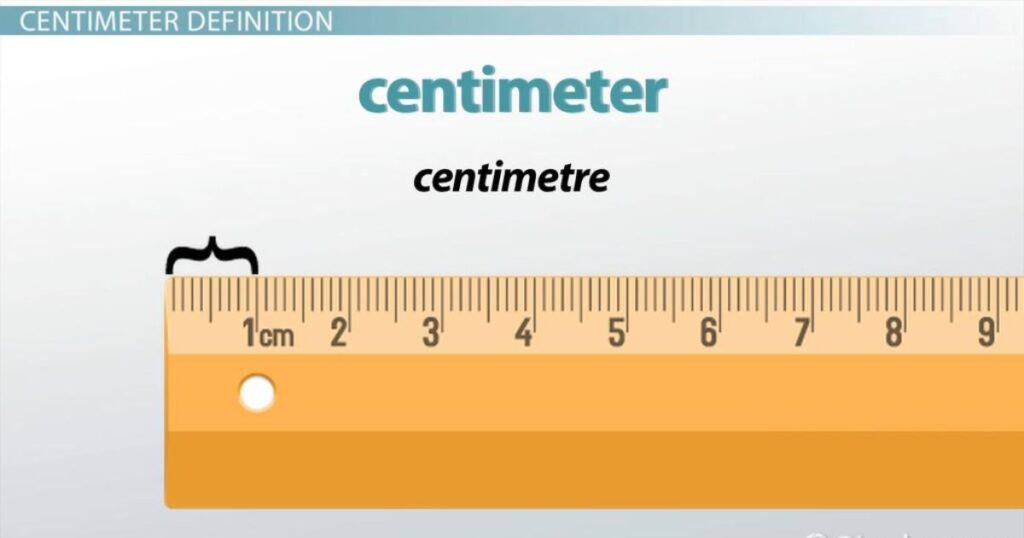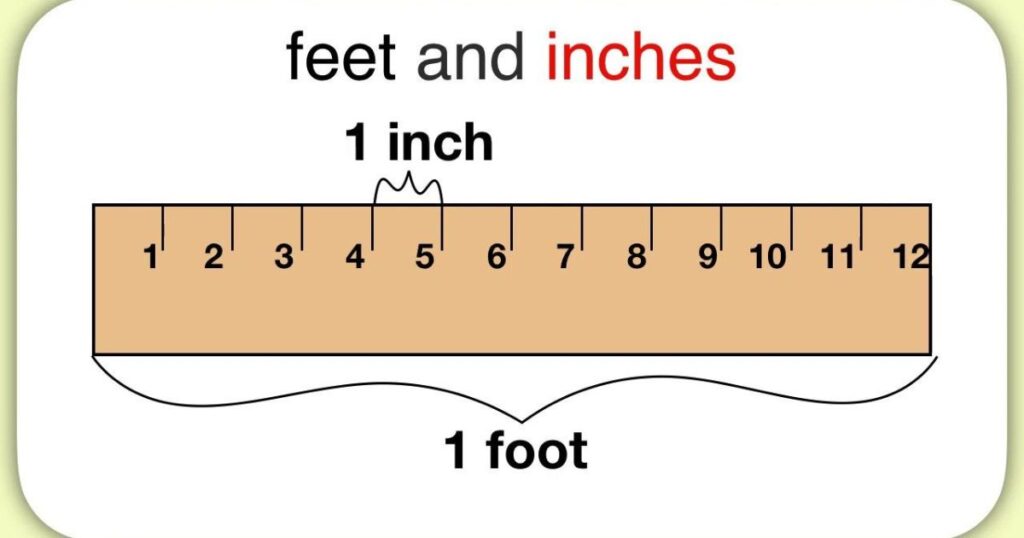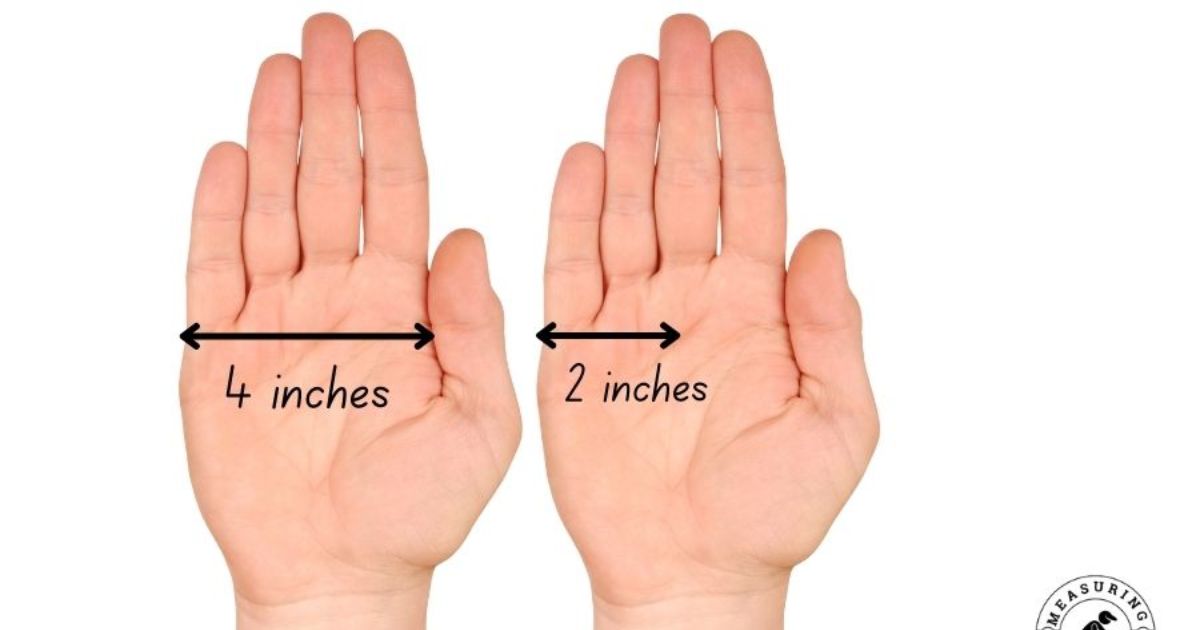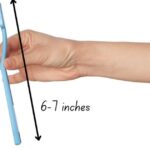In our daily lives, we often encounter measurements without fully grasping their real-world significance. One such measurement is 10 inches.
While it might seem like a simple unit of length, understanding how big 10 inches actually is can be surprisingly challenging without proper context.
This article aims to demystify the 10-inch measurement by comparing it to various everyday objects and providing clear, relatable examples.
How Long Is 10 Inches In Centimeters?

Before we dive into comparing 10 inches to various objects, it’s essential to understand its equivalent in the metric system, which is used in most countries worldwide.
Converting inches to centimeters can provide a more universal understanding of this measurement.
10 inches is equal to 25.4 centimeters.
This conversion is based on the standard definition that 1 inch equals 2.54 centimeters. To perform this conversion, we simply multiply 10 by 2.54:
10 inches × 2.54 cm/inch = 25.4 cm
Understanding this conversion can be particularly useful when dealing with international measurements or when using tools and materials from countries that primarily use the metric system.
It’s worth noting that 25.4 centimeters is just over a quarter of a meter, which might help you visualize the length in metric terms.
How Big is 10 Inches In Feet?

Another common unit of measurement, particularly in the United States, is the foot. Understanding how 10 inches relates to a foot can provide additional context for this measurement.
10 inches is equal to 0.833 feet.
To arrive at this conversion, we need to remember that 1 foot is equal to 12 inches. Therefore, to convert inches to feet, we divide the number of inches by 12:
10 inches ÷ 12 inches/foot = 0.833 feet
This means that 10 inches is slightly less than a foot. To be more precise, it’s five-sixths of a foot.
Visualizing this, you can think of 10 inches as taking up about 83% of the length of a standard 12-inch ruler or a standard American foot.
Read this Blog: 12 Everyday Items That Are About 5 Inches Long
How Long are 10 Inches on a Ruler?

When it comes to physically measuring 10 inches, a ruler is often the most accessible and straightforward tool. Understanding how 10 inches appears on a ruler can greatly aid in visualizing this measurement.
On a standard 12-inch ruler, 10 inches spans from the 0 mark to the 10 mark, occupying just over 83% of the ruler’s total length.
It’s important to note that each inch on the ruler is typically divided into smaller increments, usually sixteenths or eighths of an inch, allowing for more precise measurements.
To visualize 10 inches on a ruler:
- Start at the 0 mark on the left side of the ruler.
- Count 10 large tick marks to the right. Each of these large marks represents one inch.
- The distance between the 0 mark and the 10th large tick mark is exactly 10 inches.
This visual representation on a ruler can be particularly helpful when you need to quickly estimate or measure objects around this size. It’s a tangible reference point that most people can easily access and understand.
Common Things That Are 10 Inches Long

One of the most effective ways to understand the size of 10 inches is to compare it to everyday objects. Here’s a list of common items that are approximately 10 inches in length:
1. Five Golf Tees
Golf tees, those small pegs used to elevate golf balls before driving, typically measure about 2 inches in length.
Therefore, five standard golf tees lined up end-to-end would be roughly equivalent to 10 inches. This comparison can be particularly useful for golf enthusiasts or those familiar with the sport.
2. Two Soda Cans
Standard aluminum soda cans are usually about 4.8 to 5 inches tall. Stacking two of these cans on top of each other would give you a height very close to 10 inches.
This everyday object provides an excellent visual reference for the 10-inch measurement, as soda cans are ubiquitous in many households and easily recognizable.
Read this Blog: 10 Common Things That Are 15 Centimeters Long
3. A Bread Knife
Many standard bread knives have a blade length of approximately 10 inches. This length is ideal for slicing through large loaves of bread, making it a common household item that represents our target measurement.
The next time you’re in the kitchen, take a look at your bread knife – it might be a perfect 10-inch reference.
4. Three Debit Cards
A typical debit or credit card measures about 3.37 inches in length. If you were to place three of these cards end-to-end, the total length would be very close to 10 inches.
This comparison can be particularly useful as most people carry at least one card in their wallet, making it an easily accessible reference point.
5. Three Standard-Playing Cards
Similar to debit cards, standard-playing cards are usually around 3.5 inches long. Placing three of these cards end-to-end would give you a length very close to 10 inches.
This comparison can be handy for card game enthusiasts or anyone with a deck of cards at home.
6. Five AA Batteries

AA batteries, which are commonly used in various household devices, typically measure about 2 inches in length.
Lining up five of these batteries would give you a total length of 10 inches. This comparison is particularly useful as AA batteries are found in many homes and provide a tangible reference for the 10-inch measurement.
7. Two Pens
While pens can vary in size, many standard ballpoint pens are approximately 5 inches long. Placing two of these pens end-to-end would give you a length close to 10 inches.
This comparison is especially useful in office or academic settings where pens are readily available.
8. Two Table Spoons

A typical tablespoon measures about 5 inches in length from the tip of the bowl to the end of the handle. Therefore, two tablespoons placed end-to-end would be very close to 10 inches. This kitchen utensil comparison can be b helpful for those who spend time cooking or baking.
By relating 10 inches to these common objects, we can better grasp its size in real-world terms. These comparisons provide tangible references that can be easily visualized or even recreated with items found around the house or office.
Frequently Asked Questions
To further clarify any doubts about the 10-inch measurement, let’s address some common questions people often have on this topic.
How does 10 inches compare to the average adult hand?
The average adult hand from wrist to fingertip is about 7.6 inches long. 10 inches is typically longer than most adult hands.
Can 10 inches be easily measured without a ruler?
Yes, using common objects like those mentioned earlier (e.g., two soda cans or three credit cards) can help estimate 10 inches.
How does 10 inches compare to a sheet of paper?
Standard letter-size paper (8.5 x 11 inches) is longer than 10 inches. 10 inches is about 90% of the length of this paper.
Is 10 inches considered a large or small measurement?
It depends on context. For a smartphone, 10 inches would be large. For a TV screen, it would be quite small.
How many 10-inch segments are in a yard?
There are 3.6 segments of 10 inches in a yard (36 inches). A yard is slightly longer than three 10-inch segments.
Conclusion
Understanding the size of 10 inches in relation to everyday objects and other units of measurement can be incredibly useful in various aspects of life.
Whether you’re engaged in DIY projects, cooking, or simply trying to describe the size of something, having a clear grasp of this measurement can be invaluable.
Throughout this article, we’ve explored how 10 inches compares to centimeters and feet, how it appears on a ruler, and a variety of common objects that are approximately 10 inches in length.

Anthony is a seasoned SEO expert with a passion for content writing, keyword research, and web development. He combines technical expertise with creative strategies to deliver exceptional digital solutions.












